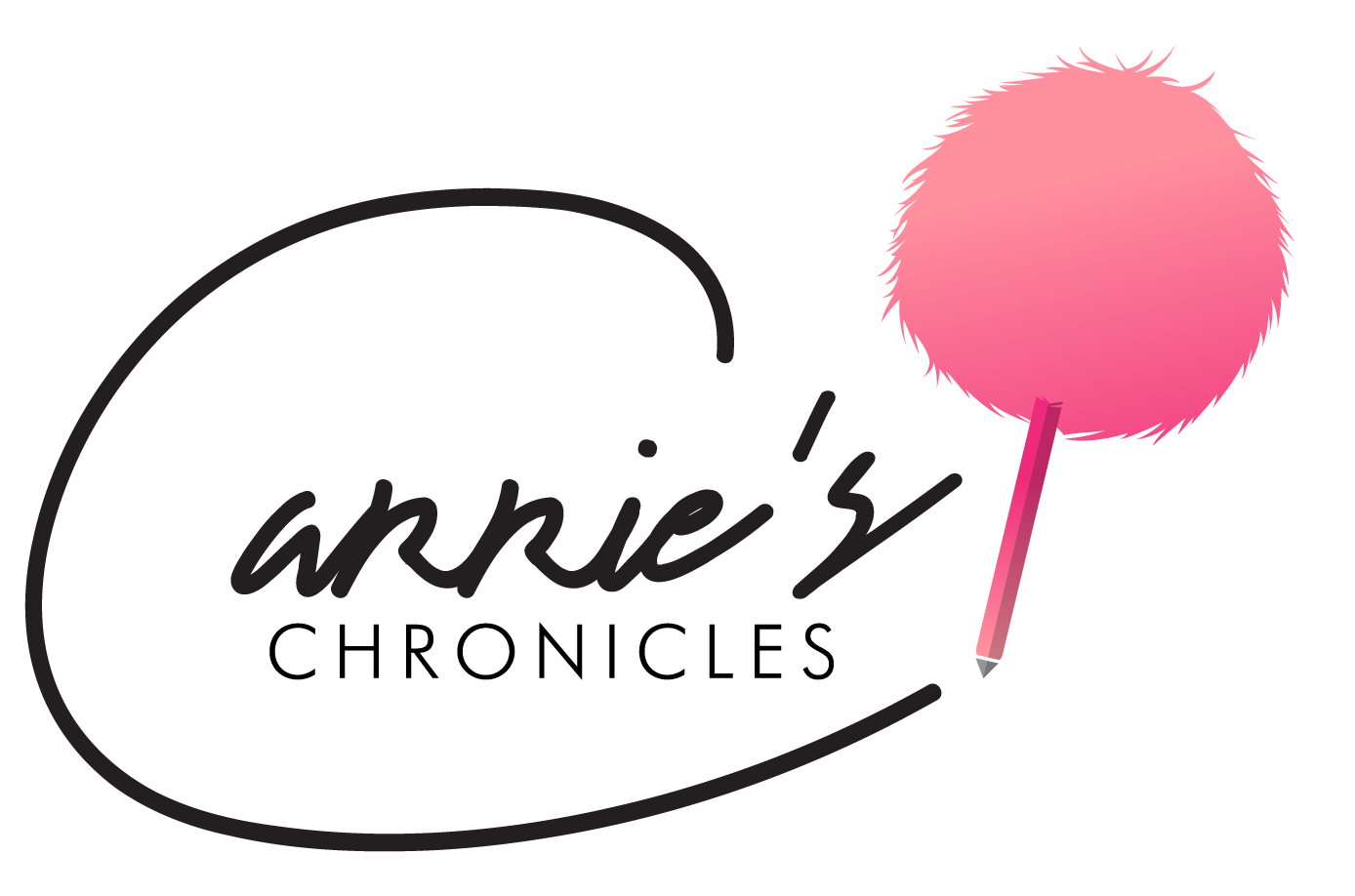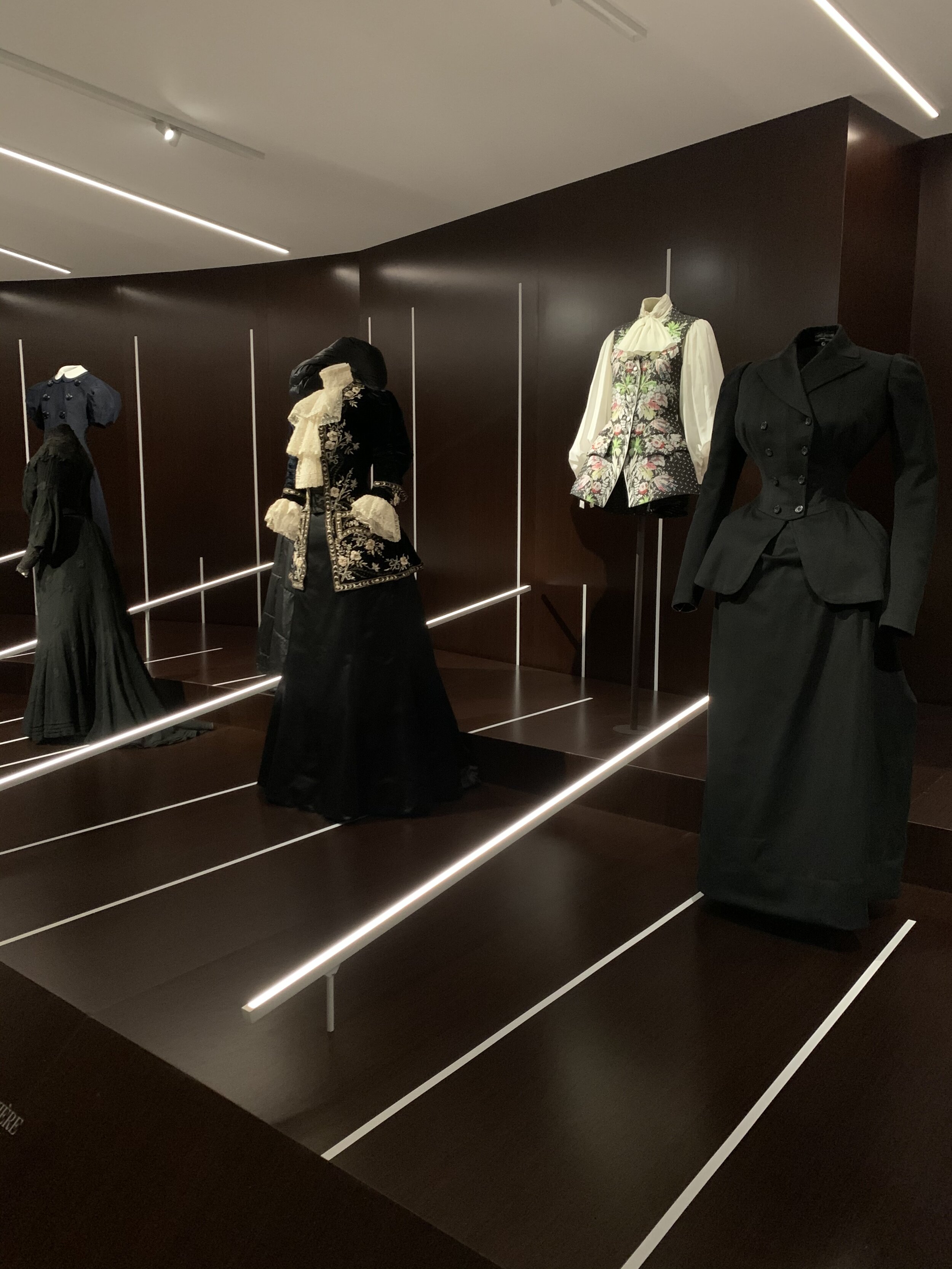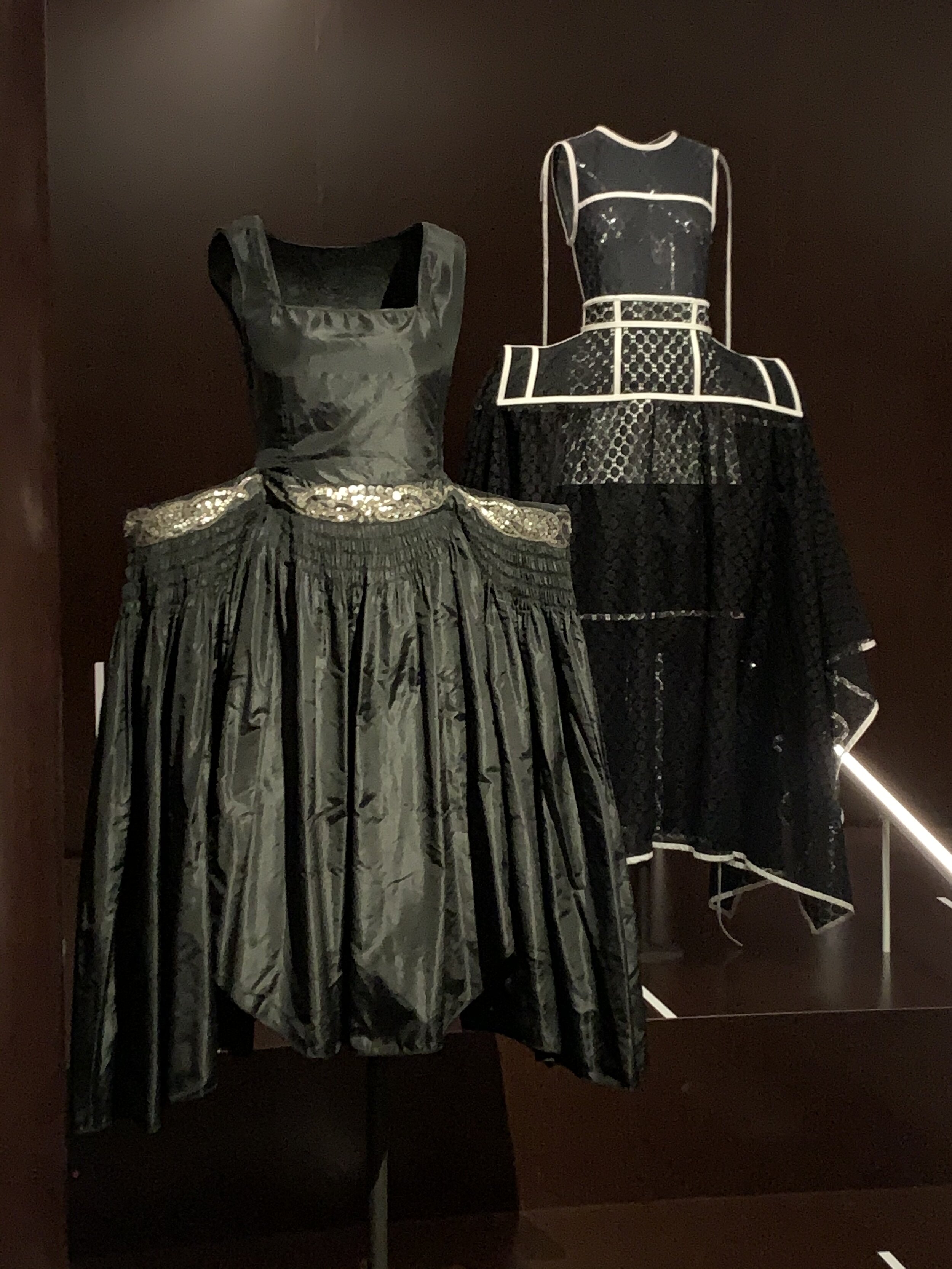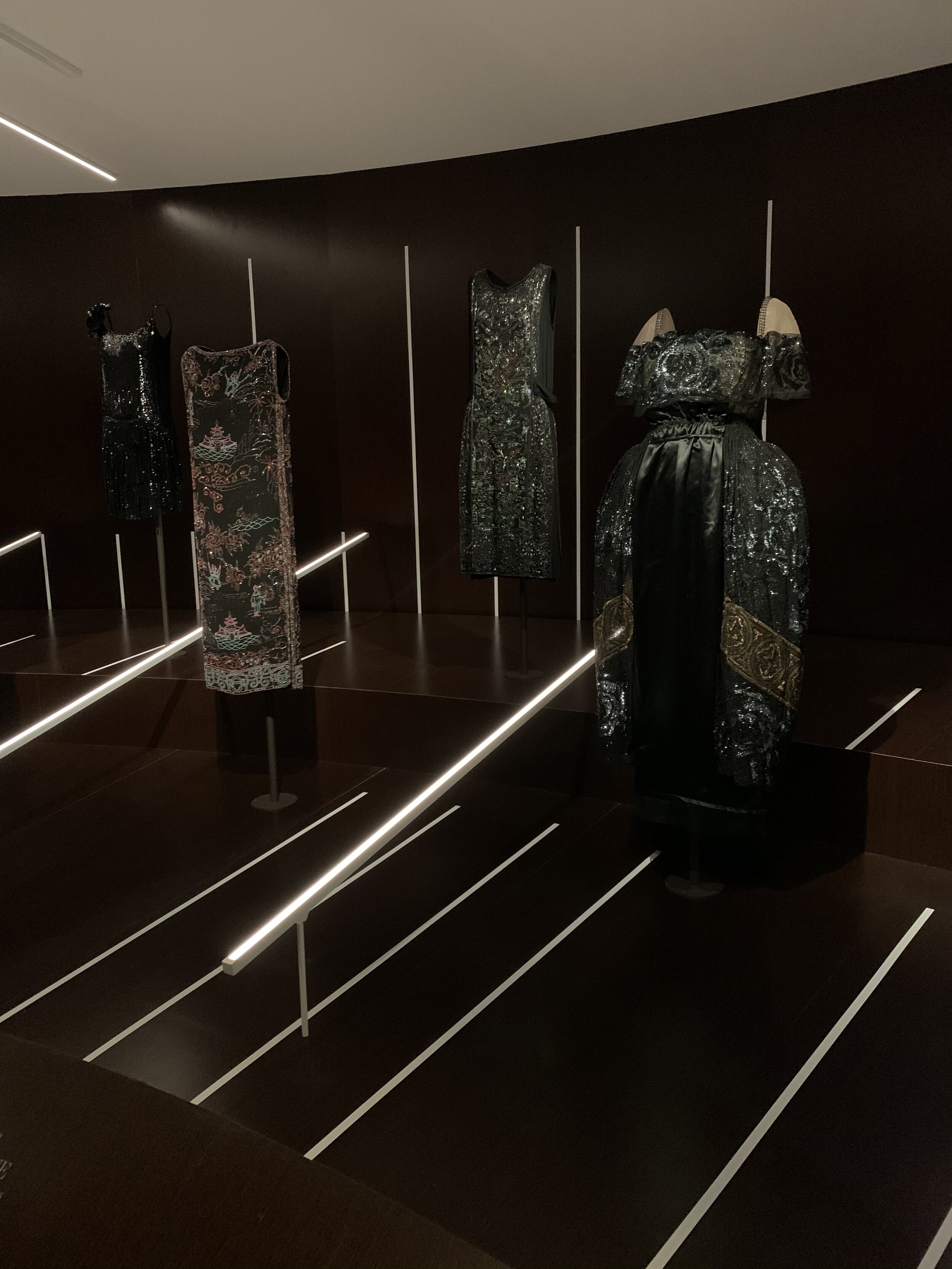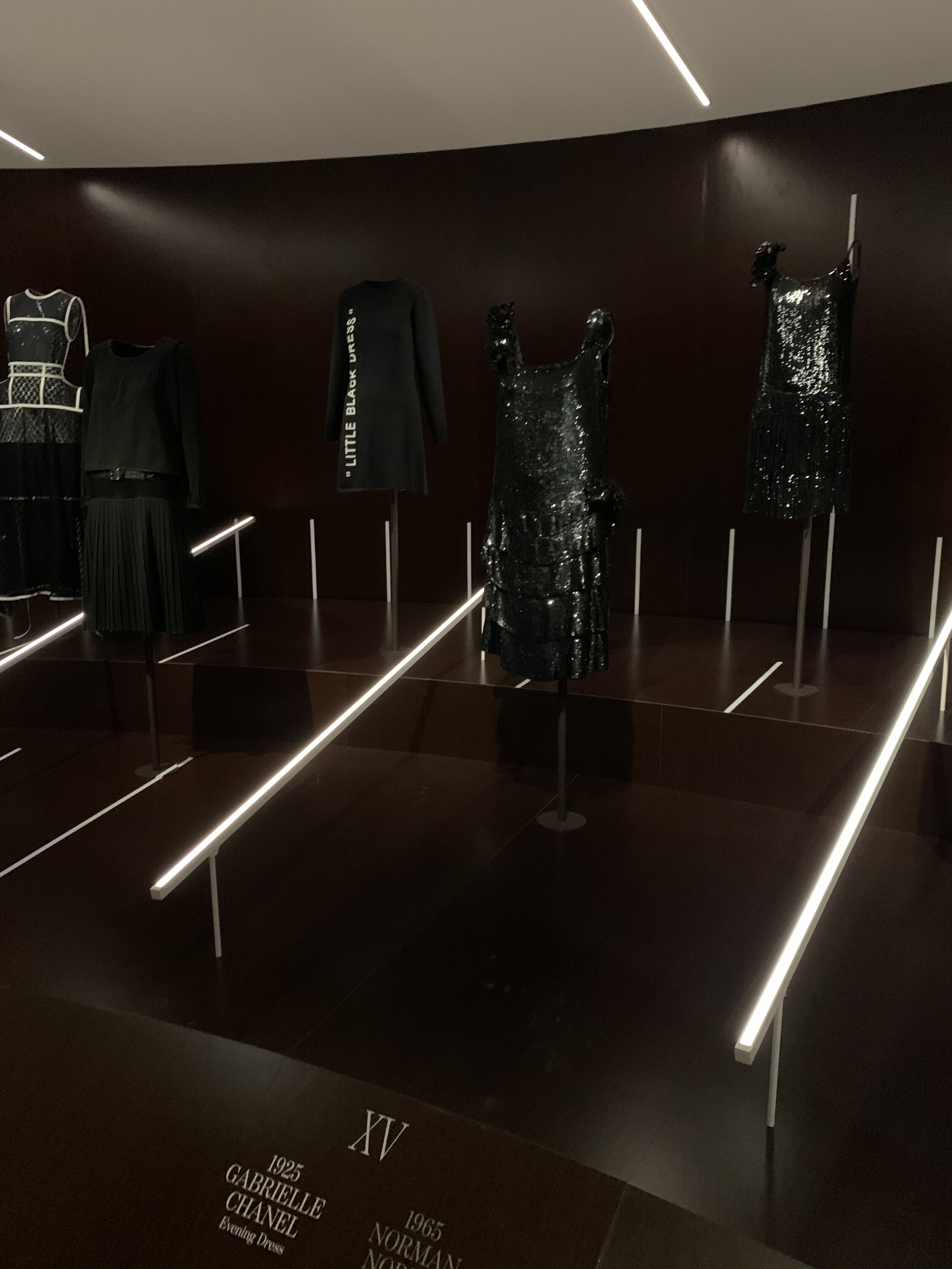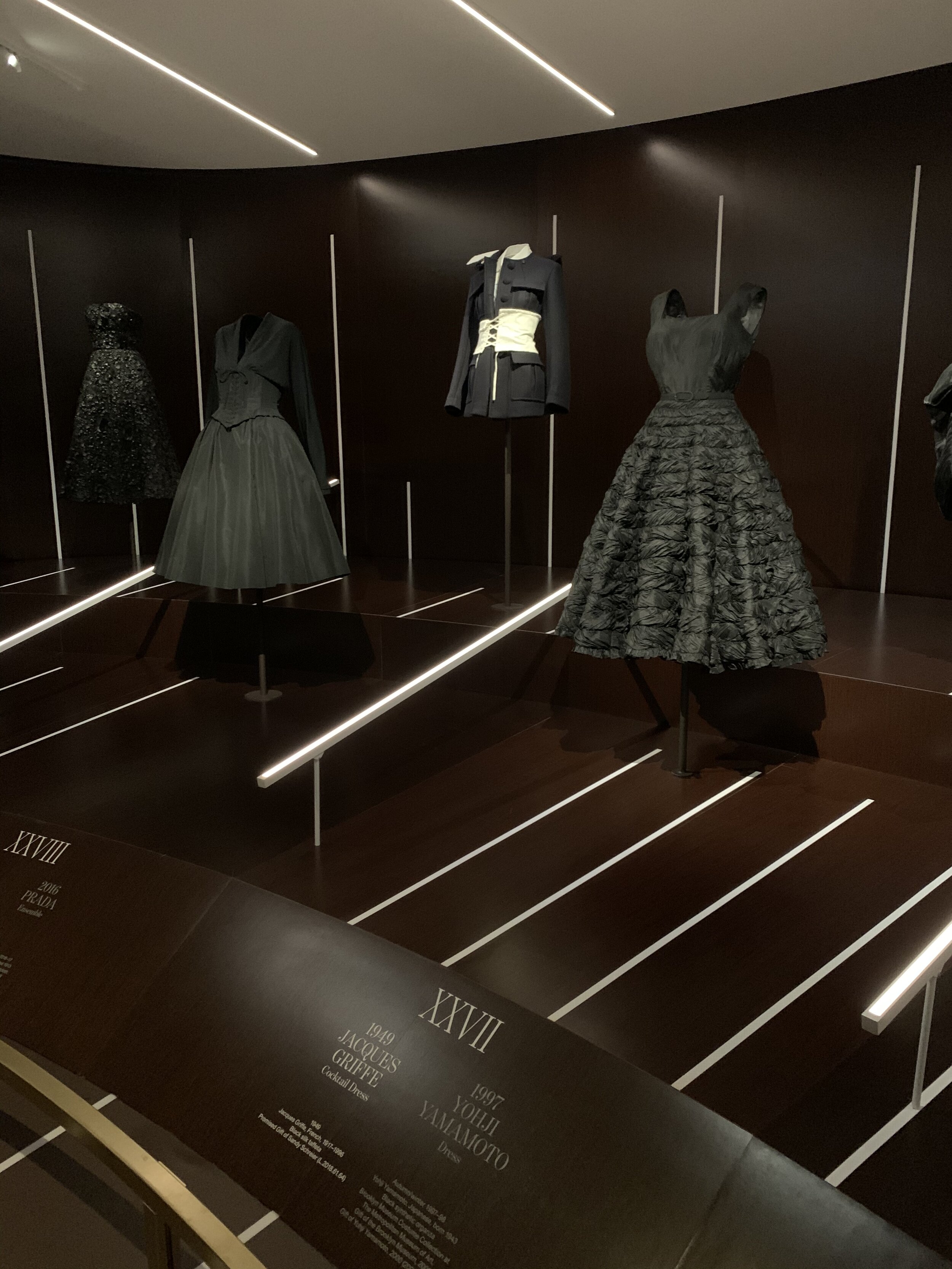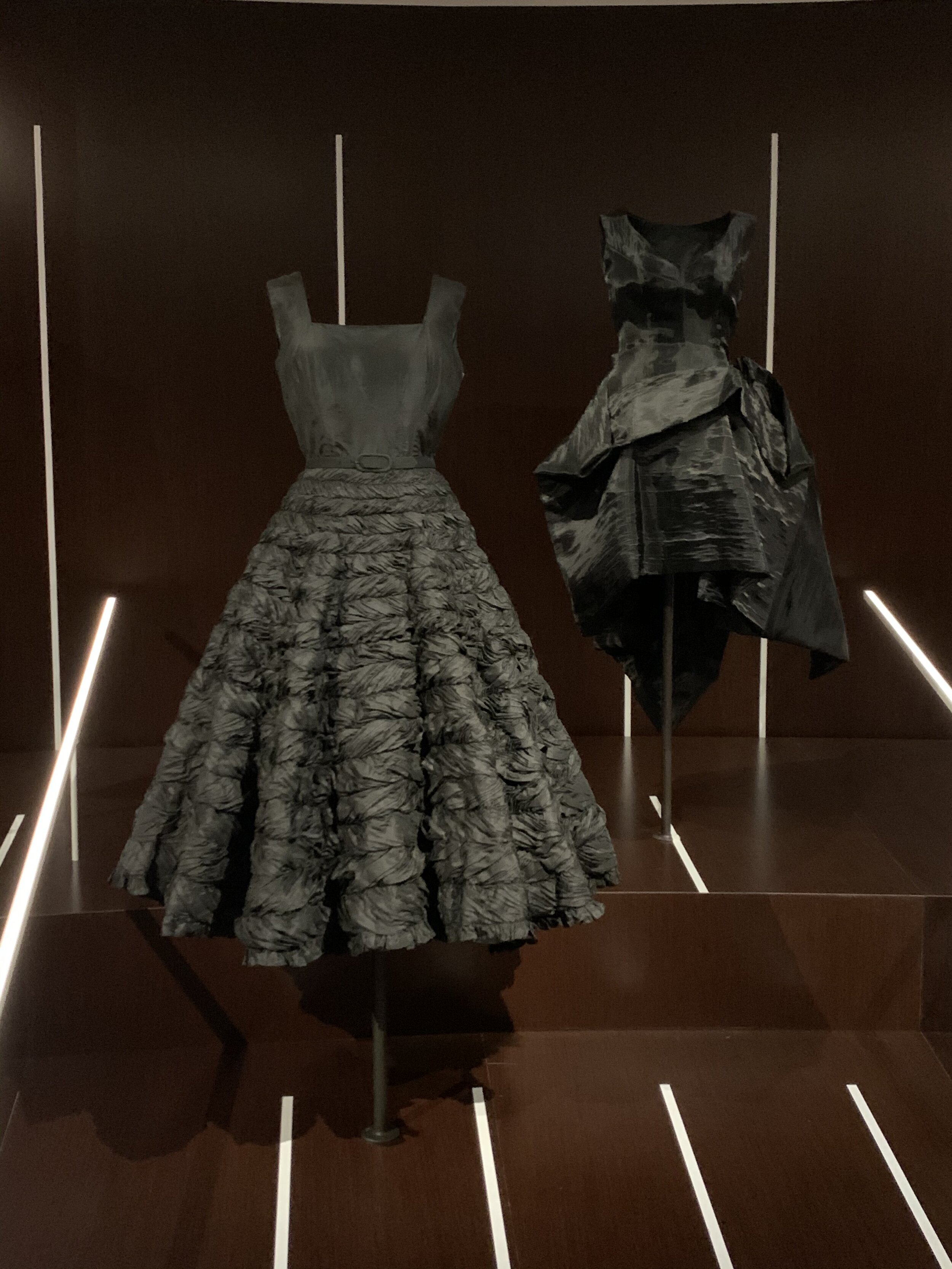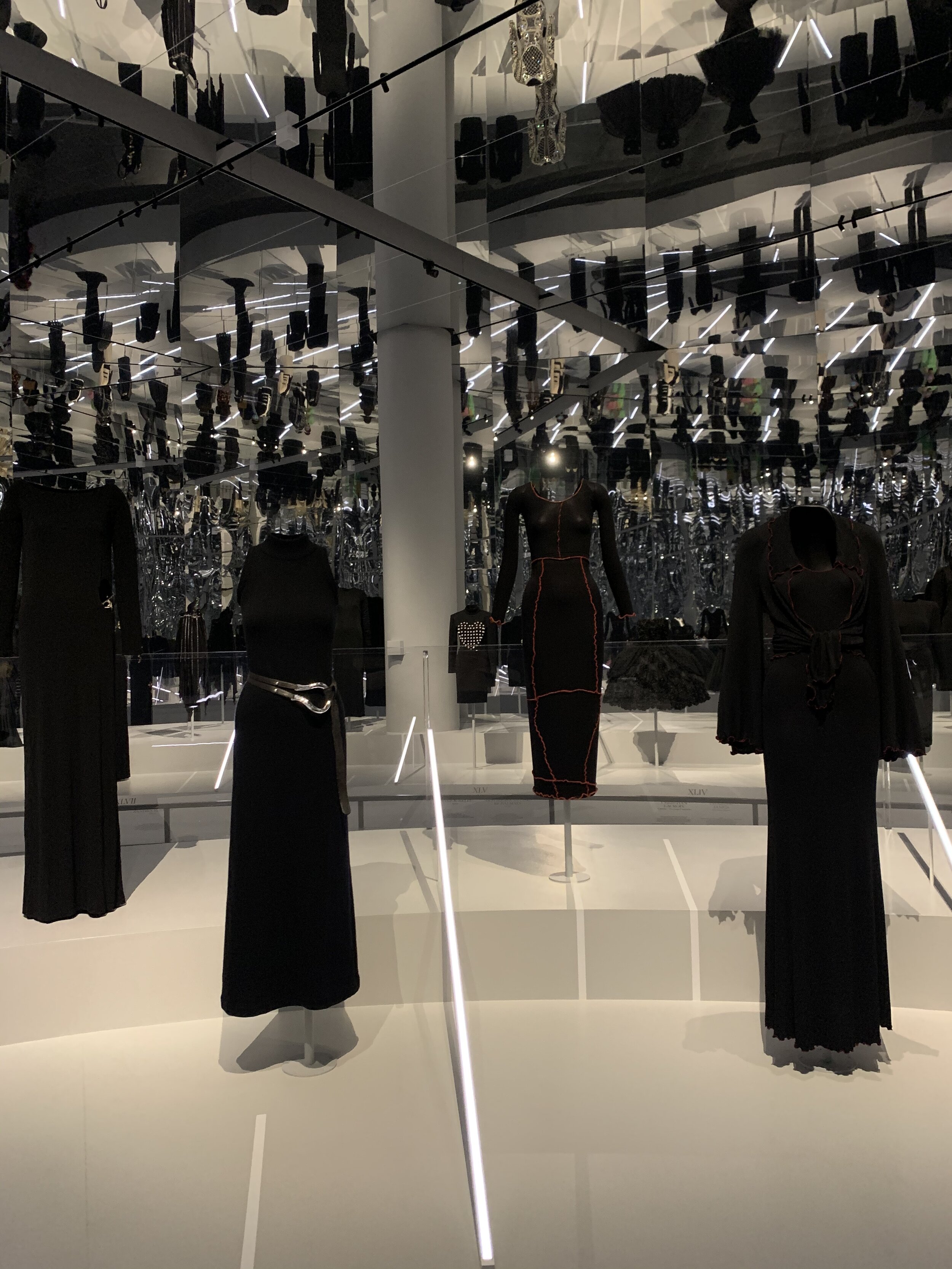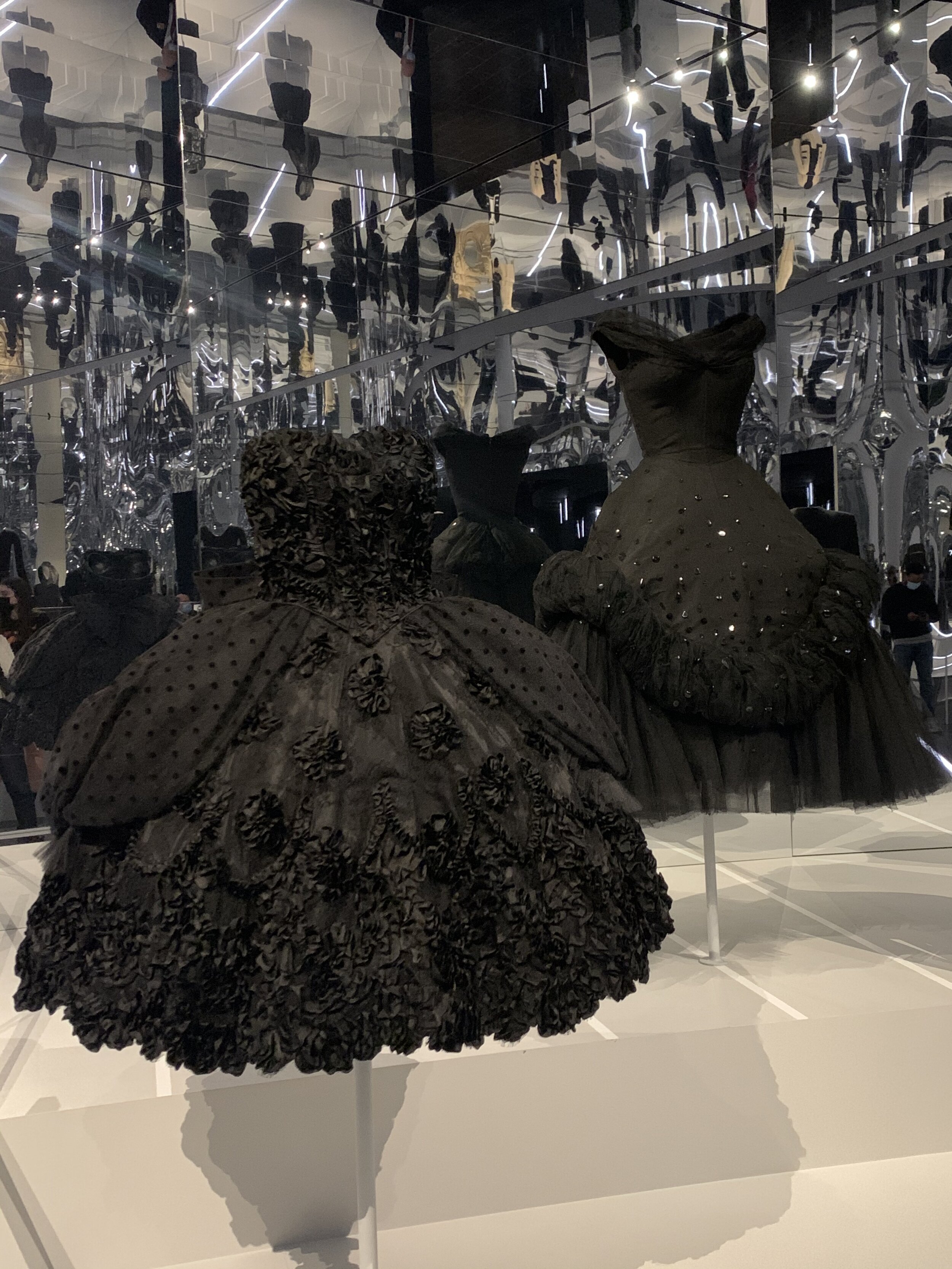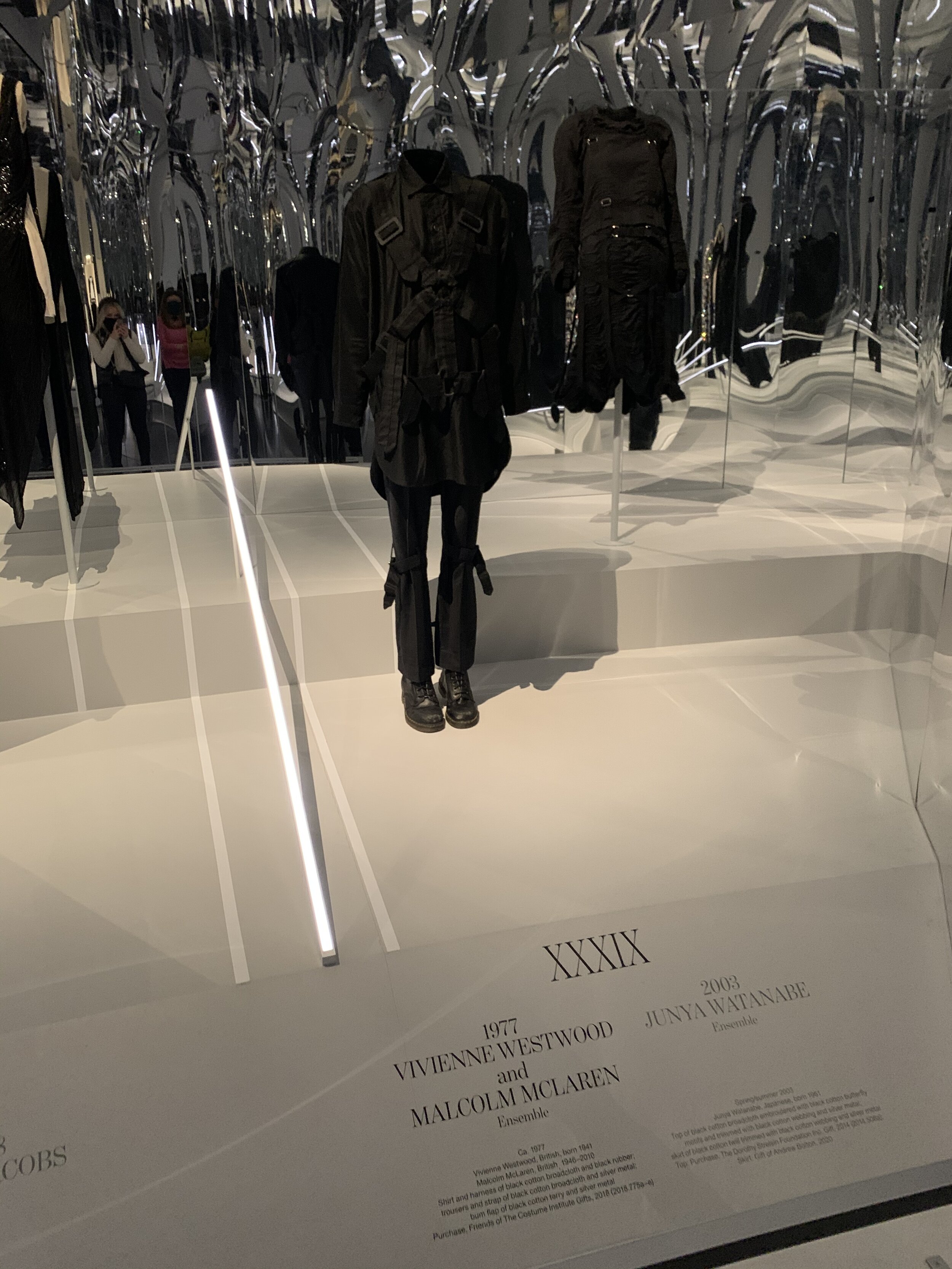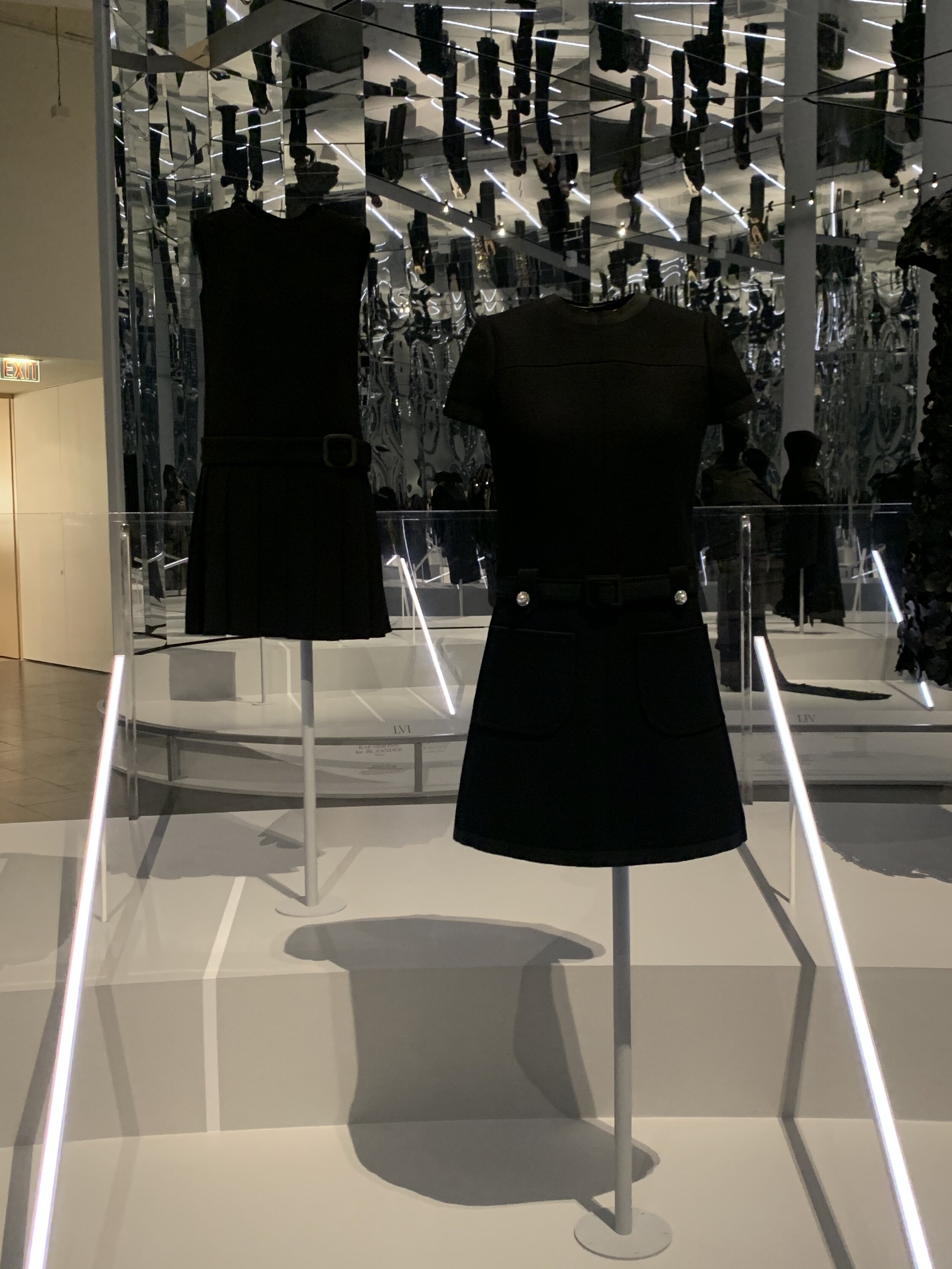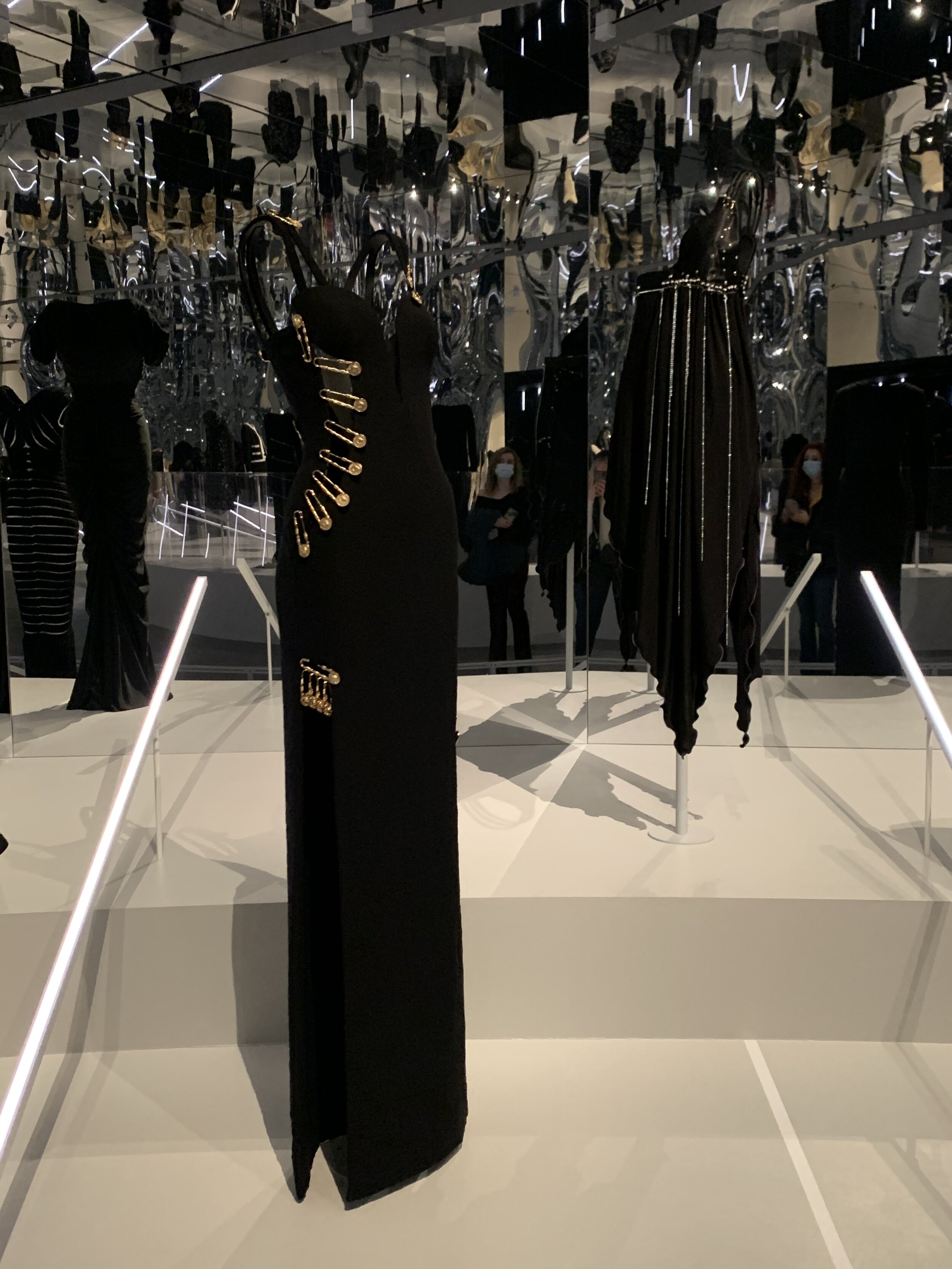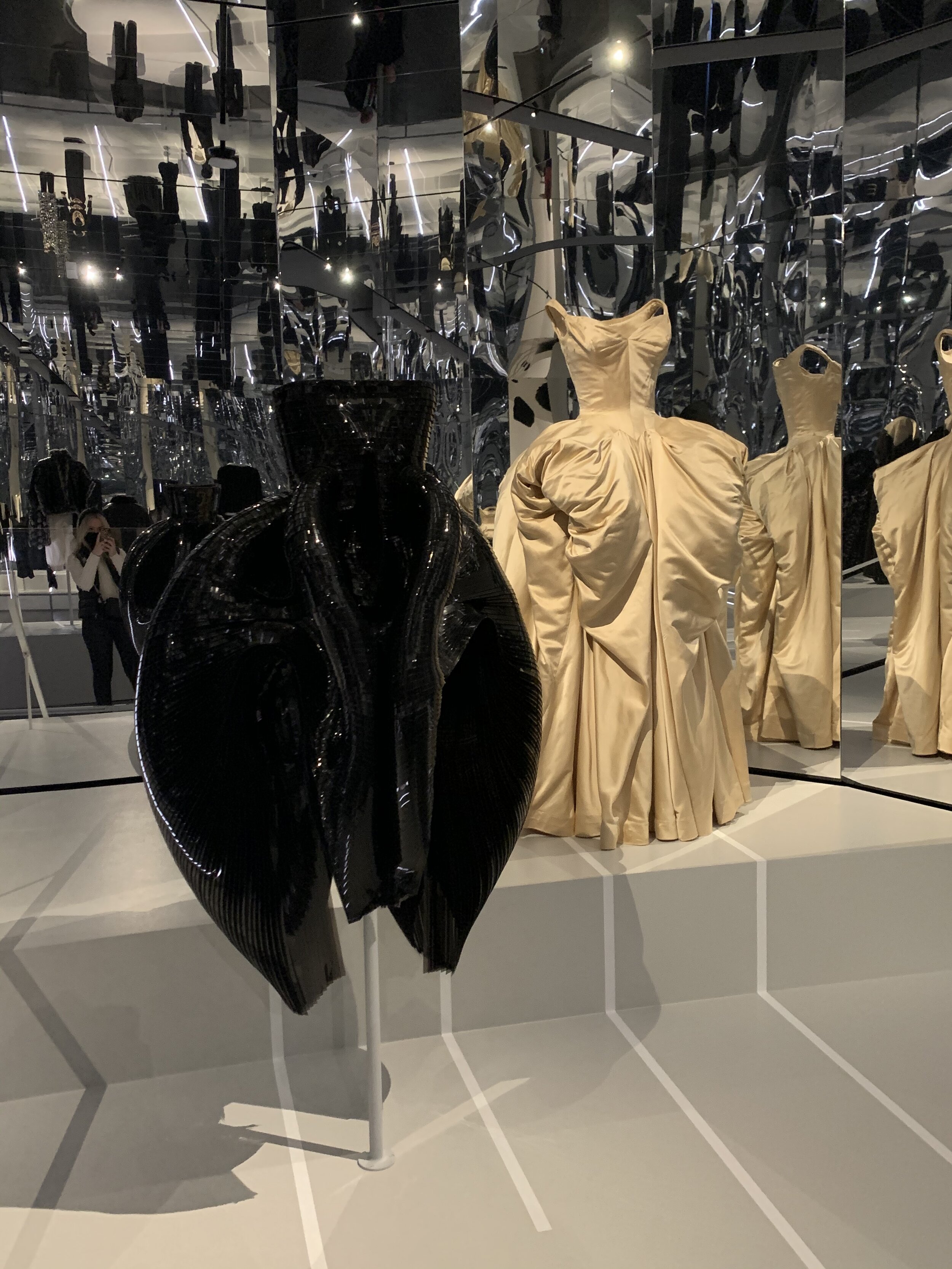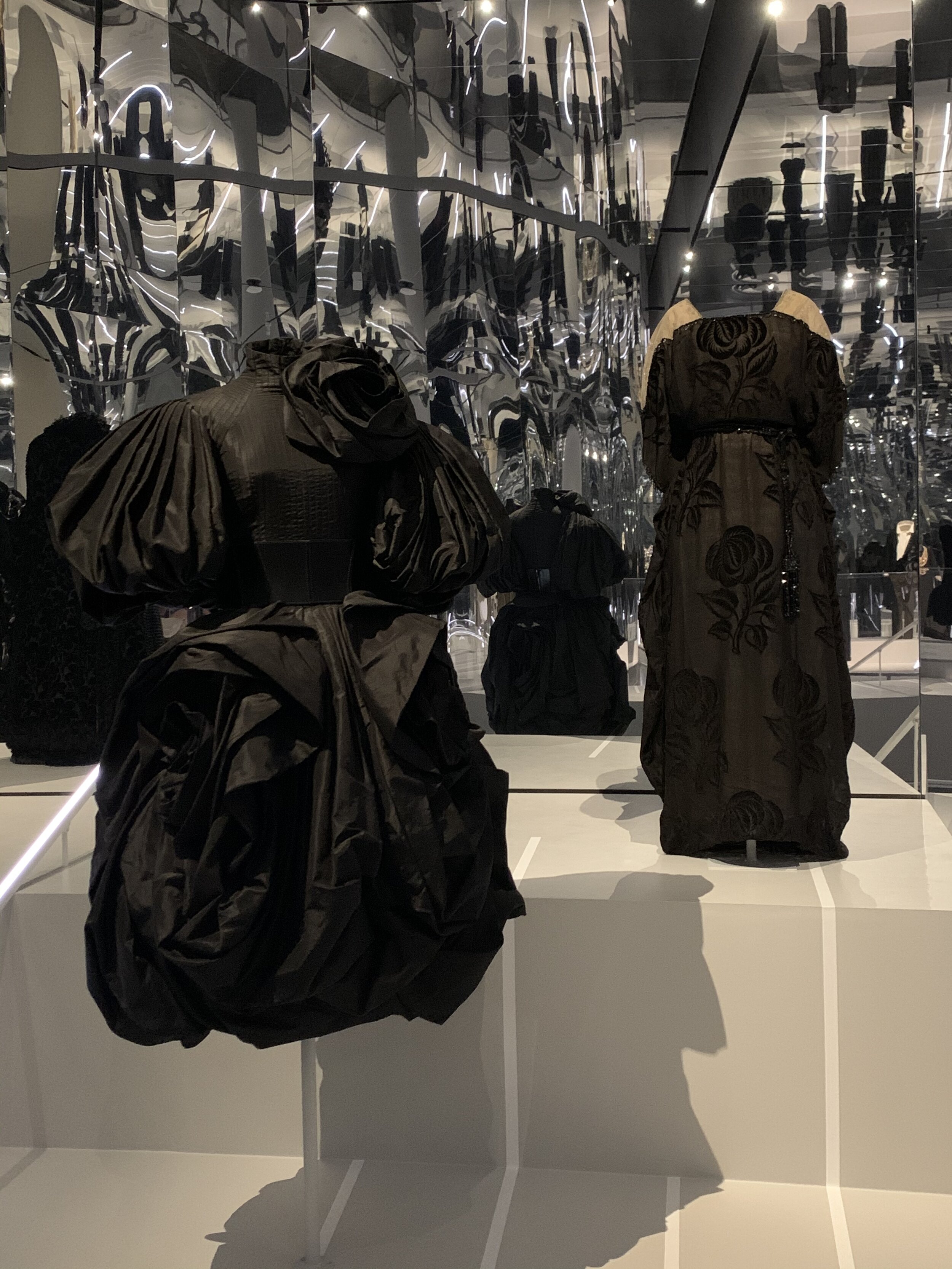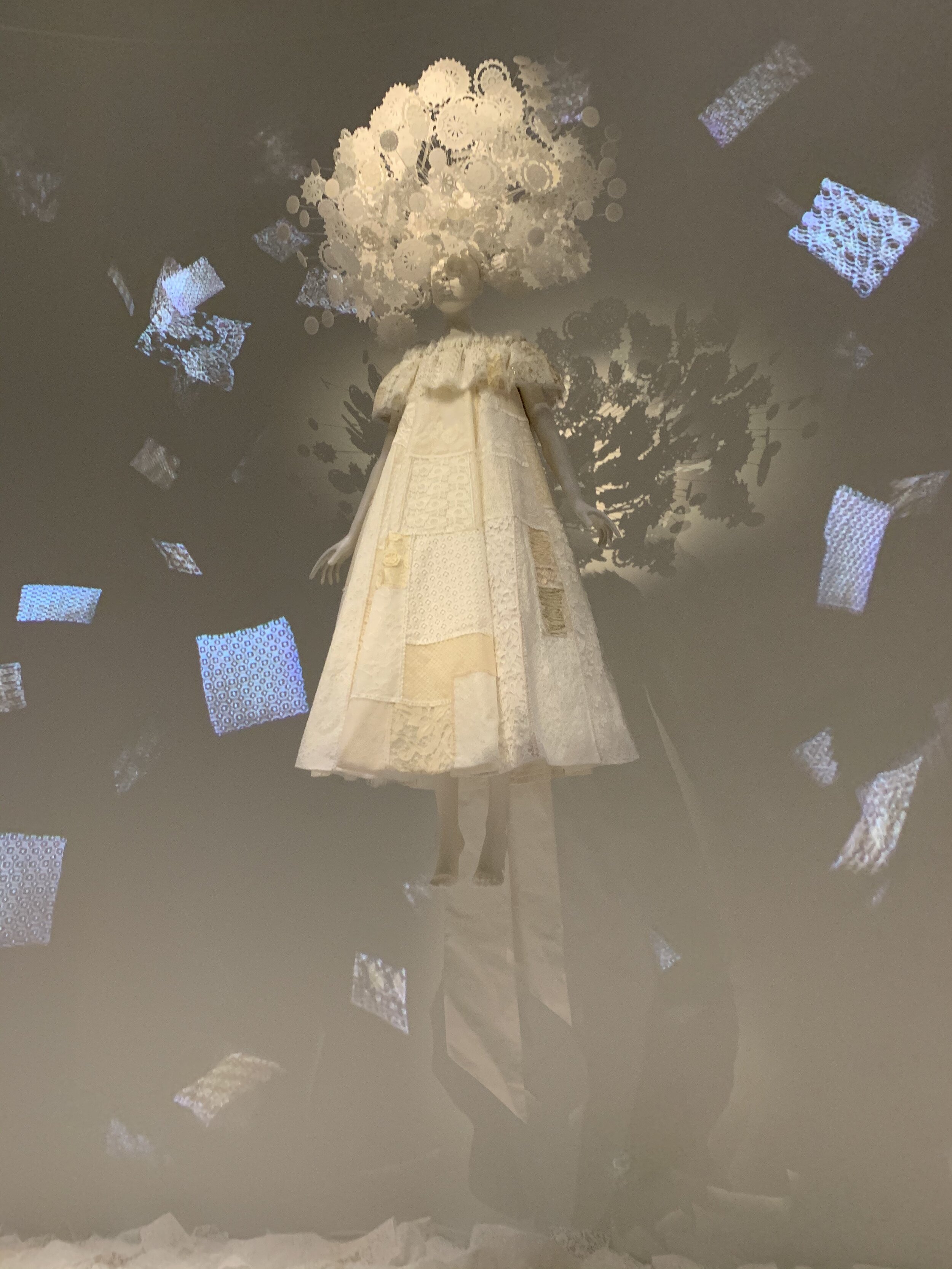Sixty “Minutes” of Style: The Met’s “Fashion and Duration” Exhibit
Consider the flapper style of the 1920s, followed by the drastically-distinct minimalism of the 90s, or the signature tracksuit of the 2000s. Trends come and go, but fashion is timeless and ever-inspired, an essence that the Metropolitan Museum of Art’s new exhibition, “About Time: Fashion and Duration,” masterfully depicts.
Curated in honor of the museum’s 150th Anniversary, the presentation exudes timeless elegance. “About Time: Fashion and Duration” blasts attendees back to the past, providing a glimpse at some of the most influential style statements between 1870 and 2020. Inspired by Henri Bergson's concept of la durée (duration), the exhibit juxtaposes several style duets from distinct time periods. Each pair features a linear and cyclical design, and they are related through shape, theme, material, technique, pattern or adornment. The garments are predominantly black, a pointed choice to highlight how a silhouette has been transformed over time (excluding a 2020 Viktor & Rolf white/off-white cotton and synthetic lace dress at the end of the experience, featuring a collage of upcycled fabric swatches).
Famed writer Virginia Woolf ghost-narrates the exhibition as attendees explore two large galleries. The first is organized in the shape of a clock, with 60 “minutes” of style revolving around its face. Each “minute” features a clothing duo, with pieces that are individualized yet always in sync. The second space is entirely mirrored, demonstrating the frenzied chaos of fashion history in wall reflections and the intricacies of the garments themselves. The repetition of ensembles across the ceiling reminds guests of fashion’s endurance as well: although represented as mere “minutes” throughout history, their relevance persists.
Among the most notable pieces on display is a 2005 Viktor & Rolf black wool jumpsuit, featuring a dramatic, asymmetrical descent of bows toward the pant hem. The ensemble is placed beside a 1939 Madeleine Vionnet black cotton evening gown; the dress is demure compared to its edgy counterpart, although bows (small, scattered and in silk velvet) serve as a common motif that add a touch of playfulness.
A 1963 Gabrielle Chanel suit also stands out; made in ivory wool bouclé with a navy trim at the waistline, the androgynous design radiates confidence and commands attention. The lasting impact of this classic set is emphasized in its style partner: a 1994 Karl Lagerfeld for Chanel black wool tweed suit. The ensemble is enhanced by a shorter skirt, yet a white plastic trim reminiscent of doilies nods to its conservative roots.
Despite the absence of a 2020 Met Gala, the museum’s ode to style history proves that an event is not trivial to celebrate and commemorate the best of fashion. No matter how or where they’re displayed, standout designs will nonetheless inspire and withstand the test of time.
